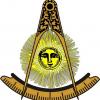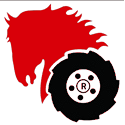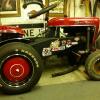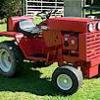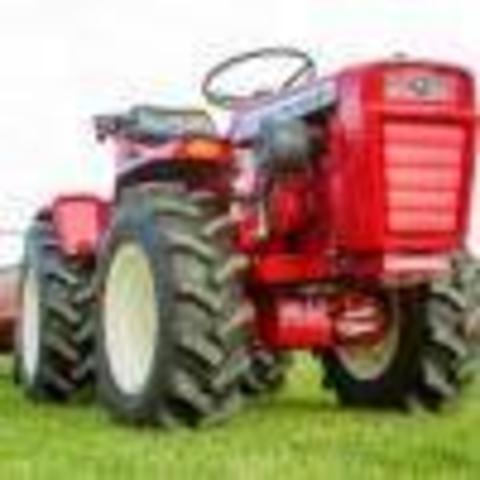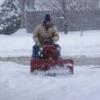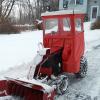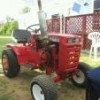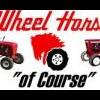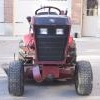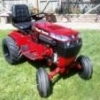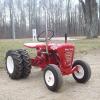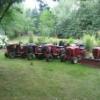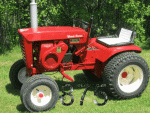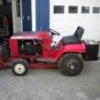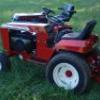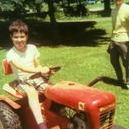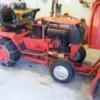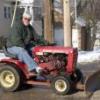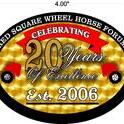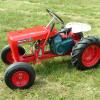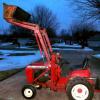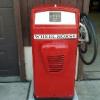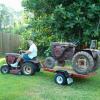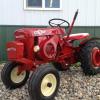Leaderboard
-
in all areas
- All areas
- Markers
- Marker Comments
- Marker Reviews
- Articles
- Article Comments
- Article Reviews
- Classfieds
- Classified Comments
- Classified Reviews
- Wiki's
- Wiki Comments
- Wiki Reviews
- Blog Entries
- Blog Comments
- Images
- Image Comments
- Image Reviews
- Albums
- Album Comments
- Album Reviews
- Files
- File Comments
- File Reviews
- Posts
-
Custom Date
-
All time
November 28 2011 - January 21 2026
-
Year
January 21 2025 - January 21 2026
-
Month
December 21 2025 - January 21 2026
-
Week
January 14 2026 - January 21 2026
-
Today
January 21 2026
-
Custom Date
01/22/2014 - 01/22/2014
-
All time
Popular Content
Showing content with the highest reputation on 01/22/2014 in all areas
-
4 points
-
3 pointsI have a 56" blade that came with my 18 auto and has never really been complete for the last 3 years. After losing my job and home I have the time to mess with the tractor and with the help of my Dad its just about done. We tore all the cob jobbed stuff off of it and got it back to the way the factory intended... I got a handle off and we are at the point now where we need to fab the rod that goes from the handle to the blade to angle it. I was wondering if anyone that has this plow could measure the overall length of the 5/8 rod and also measure to where the little kick is on it that angles it up so that the rear bend matches up with the hole in the angle handle mechanism. Its #24 on the diagram and is called the blade control rod….Its close to the last thing I need to do to get her ready to plow and I sure could use that measurement rather than trial and error in -21 degree wind chills. My Dad is 74 and it seems no matter how much I yell at him to get inside, he likes to be out there with me... Thanks in advance for any info…..
-
2 pointsI use a hole saw and 1/2 drill motor to make um New orifice.The trick is to use the hole saw you want with the existing hole size inside the first one.Example-if you have a 4 1/2 hole and you need a 5 ,you twist the 5 on the arbor first then twist the 4 1/2 on and you have a pilot guide built right in.Other wise your chasing your tail tryin to get that 5 started!
-
2 points10 feet should run about $20. NAPA around here is $18. When you make up the new chain, take five more minutes to make up your "spare" chain. I take the second one and put it in a zip lock bag with a couple of extra master links. I know that the chain will never break unless its freezing cold and I have a lot of snow to move. The last thing I want to do at that time is count links and cut chain. Keeps the blood pressure a little lower when the @#%& hits the fan. It's cheap insurance. You did better than us, I only got about 6" here in CT.
-
2 pointsThanks for your visit to the confessional Mike re owning two Teckies. I have a 19" Flymo hover mower with steel blades that dates back to about 1972 (did you have these in the US?). Powered by a vertical shaft 2 cycle Tecky it still runs and mows some of my lawn starting on the second pull. Only two things destroyed those engines - no oil in the gas or hitting something big with the blades and bending the crank. Must have well over a thousand hours on it. Andy
-
2 pointsHey...that's a trick question. They're all different parts.
-
2 pointsHi James, welcome to RedSquare. You hit the nail on the head, you are going to have FUN!!!! My tractor provides me with endless fun and relaxation. I have to pretend that I'm doing work when I'm on it so the rest of the family thinks I'm working, but it is all for fun. Here is a suggestion, when you are riding around, try not to smile too much, or they will think that you are having too much fun and will look for other chores for you to do. Don't ask me how I know this, but it is a fact. I have a question that you might be able to answer. My tractor being assembled here in the states does not have any metric nuts and bolts on it. Was your tractor assembled over there, and if it was, did they convert over to metric hardware in assembly? Rick
-
2 pointsBeings you got that smart phone you need to capture some of those moments (of your Dad and son both working on, has got to be cool) so you can look back when you are your dads age. Hint, hint Always nice to have pictures
-
2 pointsBattery life can be enhanced with a trickle charger (about 2A ) but if used extensively the trickle charge itself will sulphate the battery. This happens when the H2SO4 loses a charged particle and becomes an insulator rather than a conductor. The electrolyte (liquid conductor) mixes with both conductor and insulator thus reducing the effectiveness of the charge. As the trickle charge continues the spectrum of the insulator grows and starts to take over and in time you have a dying then dead battery. Auto style batteries take on and deliver huge amounts of electrons and a lead acid battery can be considered dead at 10 V. The industry also has and uses deep cell batteries. Deep cell technology is different than auto technology but the deep cell knowledge is very helpful to the auto section. Keep your tractor or auto battery fully charged with a trickle charger, yes. But every so often charge that battery with 10A or more then trickle. Most importantly about 2x or 3x a year equalize that battery. By charging at a higher current 50A for a short time. The battery will get warm and the electrolyte will bubble as it accepts many amperes. For the first time do this for a minute, feel the battery for heat. Test the electrolyte with a temperature battery hydrometer ($10), then test the open circuit battery for terminal voltage. The VDC will go up, let sit for an hour and retest. A good battery at any temperature after a complete charge to float voltage should read at least 12.7 VDC. Readings will be at least 13 VDC and never higher than 15 VDC. Battery equalizing can be done more often, but testing the wet acid battery with a hydrometer is a must along with a DC voltmeter. It is vital to learn how these tools work and it is vital to use them. Too much over charging equalization is bad. Hydrogen gas is formed, sparks are possible, over heating is able to be done and all this can produce an explosion. Remember that the battery is an enclosed container whether the cells are open or not and the battery is a time bomb. So wear protective gear, eye glasses and when equalizing a battery remove it from the vehicle, cover with a leather blanket and never leave the equalized battery alone. Since they are small 20-50 AHr time the equalization period 1 minute, 90 seconds then stop, feel, smell, look and test. It takes time and a lot of safety precautions, no kids, no pets, no open lights, BE PRUDENT, BE SAFE. BE DILIGENT If you decide to do this PITA work it will pay off with a good battery for about 10 years. Also at the same time clean, secure, clean again the battery itself, the container, the wires, the cables, the connections, test the starter and the starter relay (contactor). The starter motor must be tested under an equivalent load to the ICE, internal combustion engine. Cold destroys the ampacity of a battery, the colder the smaller the battery. In very cold -40 FC, the battery is 50-60% less than at 21C or room temp. With electrolyte being closer to water or a specific gravity of 1 it freezes, at 1.25-1.3 the battery cell is good, won't freeze up. Keep your battery clean connection tight and electrolyte as an acid and top up your wet battery with pure water, distilled or RO filtered water. And if in the winter you top up your battery make sure you mix that pure water with the battery acid or it may freeze.
-
2 pointsChasm...now that is what I am talking about!!! OMG...those pictures are great...no bugs!!! Thanks Mate.. It's sooner then you think ...
-
2 pointsRound Two. I am very impressed how this old horse runs. 8 years ago it was all kinds of trouble, now, its like a new tractor. I'm thankful for tearing into and just starting all over with the wiring , fuel lines, carb , governor and so on. Not to mention all the great info hear. Its 10 degrees. Fired right up , left it warm up, open the throttle and it never misses a beat. Not a single hiccup.
-
2 pointsNice job. Looks like the same as the one I'm working on except sheet metal and front bumper, no power steering and a different trans. This one is painted orange, has an id tag riveted to the right fender and a tubing seat frame. Gut feeling is that it was born as a MDOT tractor for the state, but will probably never know as the po has passed. Craig, I'll get some pics tomorrow. But not close enough to show a couple runs in the primer from the rookie spray jockey! I may also get a few of the building's owners toys.
-
2 pointsFiring up the 1977 B-100 to get started on the 4" now, 8" to 10" total to come later. Pictures will follow. So, here's the old man all bundled up in his snow suit. The 1977 B-100 has been sitting out all winter, just covered with a tarp. As I have said before, it never fails me. I grabbed the video camera and started to take a video after I started it. Don't you just love the sound of a properly tuned Kohler singing in the snow? View from the drivers seat as I plow snow in 3rd gear.
-
1 pointHow many here ride their tractor up the ramps and how many walk it up? How many have had a ramp kick out or the tractor come off the ramps while loading with you on it? Did you learn anything? I walk the tractor up in 1st gear while walking beside it. When it gets in the bed I just slap it out of gear then shut it off. I used to walk behind the tractor until one time I slapped it too hard and put it into reverse. Next thing I knew, the tractor was pushing me backwards as it came back down the ramps. So, being that it out weighed me I let it do what it wanted. I then tried it again, walking next to it, and didn't slap it quite as hard. I guess if I was a tractor, I'd try to run over the SOB that slapped me too.
-
1 pointI am BIG on trying to solve any problem I have by searching first, posting questions second. As on many other forums, we have a HUGE QUANTITY of threads that will deal with the exact same problem(s) I have. There are always plenty of suggestions for solutions, but many times the OP never comes back to respond with the solution. PLEASE GIVE US THE OUTCOME.... PLEAAAAASE. I suggest that we should have a way to mark the threads as [PROBLEMS] then after so long the system will come back and ask the OP if the problem was [sOLVED] and if so, post about it. Anyway...
-
1 pointSorry for all the posts guys, I was just anxious about my new gauges. I know the hour meter isn't stock but there was one in the dash tower when I got it so I bought a nice new one. Plus it will help me keep up with oil changes and stuff. I tried to get an amp meter that looked as original as possible. I really like them :)
-
1 point
-
1 pointOh man I wanna see that!I have considered some aluminum rims and with a couple of lennox hole saws and a lil cutting oil bam!Stock AND slots would bring a certain sexy to an already irresistible temptation!
-
1 point
-
1 pointGot her running today...runs great. Just have to paint my wheels and buy a couple parts and I will start putting it back together.
-
1 pointI too am a brick layer,stone mason ,concrete former,placer,I work with guys that get cracked fingers bad,i get it from time to time,we use hockey tape on our fingers to seal up the cracks,but nothing works full time,just a break from bricks and then they heal a bit,i empathize with you guys,when it hurts to wash your hands
-
1 pointSeat is off a crapsman and the fuel tank is in the rear. Hydro front pulley. I would have a guess at 9 different tractors
-
1 pointOhhh man, so I was going to take the beast out this morning to clean up the driveway and the battery was dead :no: :no: On the trickle charger now. I was having a blast last night, cleared both neighbors' driveways.. I guess that is what you get when it gets down to Zero and the date on the battery is 2010. Semper Fi
-
1 pointSo I was missing the headlight contacts for my C-160 and bought some that were "sight un-seen" that turned out to be overpriced for being used and being junk. Bummer. So....., after seeing what they are supposed to look like I decided I would just machine the parts and make some new ones myself, for FREE. Lol. Now, I definately didn't "re-invent" the wheel here, but do feel I did recreate a "better built wheel" in my opinion. The stock parts didn't seem to have held up too well, so I used some better than stock materials to fab up my own. I used brass for the contacts and nylon for the insulator, both being turned from rod stock on the lathe. The brass contact is hollow and soldered to the wire and the insulator is essentially an odd sized nylon washer but none the less still had to be custom made. Anyway, thought you guys/gals might like to see what I came up with.
-
1 pointWhen I saw this Toro sno-pup I laughed, I think this thing should be in a museum! When I was in the lawn and garden equipment business, we were a Toro dealer back in '72 and we sold a lot of these pups. I noticed that this was the wider one that they offered. We sold more of what I think I remember as being 14" ones, but we sold a few of this size too. I own the much newer version of these now and I really like it. Ours has electric start and I'm very glad as it takes quite a few cranks to start it, but it always starts. Mine probably has a very similar engine as yours does. They've come a long ways in their designs and this version really throws the snow! I have always thought that Toro made the best small snow blowers out there. They just work, and I believe they are the lightest, so they are perfect for small jobs. Thanks for this post, it brought back a lot of good memories! C-85
-
1 point
-
1 pointReminds me of a few years back, we had a forcast for 12" snow, so I went out the night before and mounted the blower to my C-141 and backed it in so she was ready to go. Next morning I looked out to a whole bunch of snow, yippee! I got all bundled up, trudged out to the "horse barn", fired up the C-141 and took off throwing snow for who tied the pup! Went about 25' and the drive belt to the blower broke!!!!!!!!! Couldn't get out to go buy another one, so backed the C-141 into the barn, took the blower off and mounted the trusty blade. We got the job done, but took a lot longer and a lot more effort! What's that old saying, "the best laid plans of mice and men"!
-
1 pointthey are very nice to watch in fly but they are bad for the farm land,they don`t eat just the seedling and grass they even eat the roots and destroy the whole plants .also there feces are not good for enrich the soil and did you ever walk along the water shore next to your land, (your feet are full of excrement )and what about the the microbes they could bring .this is my opinion
-
1 pointI used to load by walking next to the tractor and just shut it off when the rear wheeks got onto the truck bed, and then pushing it the rest of the way. Now I use a small winch from Harbor freight. Trying to push a non running D 250 up the ramps was a little much. Now I just stand to the side and use the winch. I also use the aluminum arched ramps so less chance of the decks catching.
-
1 pointWe could have a snow blade painting contest and then a giant You tube video with about 400 people watching the paint dry and rockin out to some tunes!
-
1 pointTake a good look at that cutting edge and make sure it's not time to flip it over. Looks like it's pretty close in that picture. Have fun!
-
1 pointGave up loading the bed of my truck with tractors years ago because of stories like that. All tractors ride in a small landscape trailer now. Mike...........
-
1 pointGot the ranger motor back together today, looks good, we'll find out how it runs tomorrow. lol. Should be a good motor, has all new gaskets/ seals, new carb, piston, rod,rings, and ignition stuff.
-
1 point
-
1 point
-
1 pointI have been getting L> magazine for about 3 years now and I read it from cover to cover as soon as I get it home from the post office. My wife also looks through it and reads some of the articles. Something that is a bonus if you are subscribed to the magazine. In March you get a copy of TRUCK & TRACTOR SHOW GUIDE with shows listed buy date, and by state. Very nice to have this little supplement magazine.
-
1 pointOk , Here's mine. My good ole gt14 , resting under the tarp after round one. We got about 4 inches so far. I tried plowing up my drive way this time and there was no problems. Pushed the snow right up it with no slipping. I don't even have weights , just chains, but these gt14's weigh a ton. I just bought this house and don't know the neighbors that well. I am starting to feel bad plowing my driveway and they are all shoveling. I guess I should be nice and ask .... lol I'm also a little mad my blower bearings didn't come yet as this would be a great time to try it out. I hope we get some more snow after they come!! Kyle
-
1 point
-
1 pointI just subscribed a couple weeks ago. I met the managing editor at last years WHCC show in PA She is a member on this forum as well. waiting patiently for my first issue. tractorchick
-
1 pointThings electrical 12 V DC battery and alternator charging things and devices that may help you to understand what takes place with the electrical parts of your wheeled vehicle. This will be as non-technical as I can get it. First off, a wet battery is a storage tank, not a producer of current, voltage, power. In today’s world wet acid batteries can be charged, discharged, hold that charge or be completely useless when dead. The state of charge is dependent on the complete system. The system includes: the battery, the alternator (AC Generator), starter, relay, the wires, cables, terminations, devices, ground and you. Battery---a wet cell battery consisting of 6 wet cells, walls, rigid container, cell covers, electrolyte, terminations and lead in compound form, so the electrolyte interacts with the lead portion of the compound. The bigger the battery the more power is stored, delivered and taken on. The electrolyte (1.25-1.3 S.G.) is a liquid conductor, tested with a hydrometer measuring specific gravity (S.G.) as compared to pure water (1 S.G.). Water freezes at 0C, 32F, electrolyte with a full charge is good to about -40 C, F at least. Battery must be clean, secure with terminations clean and tight. The electrolyte level must be maintained at the proper level and at a S.G. that allows power to come in and go out. Alternator---as used in vehicles is a machine that rotates and this rotation cuts lines of magnetic force from permanent magnets or electromagnets. The more magnets, the slower the RPM, THE MORE LINES OF FORCE ARE CUT, the more power. Alternators can use carbon brushes to transport the generated current to the end use. Cars, trucks and tractors have their end use as the battery. The primary purpose of the alternator is to keep the battery charged. But alternators produce AC (Alternating Current) not DC (Direct Current). Since AC and DC react differently and the battery is DC this rotational AC current must be changed from AC to DC and this is done by the rectifier set (rectifier). The rectifier set in newer equipment is a 3-phase device that is 3 lines of power, all forming into DC current to feed the battery. A single phase set up would have but 1 power line. A regulator if used may be part of the rectifier or alternator and is used to keep the highest voltage around 15 V. As a note there are many types of regulators but they are doing the same job. Wires and cables---are the roadways that carry the DC current to and from the battery and to and from ground and to and from all electrical devices. When new the wires and cables are clean but age makes them old, dirty, corroded or loss of insulation. Time makes it important to maintain these wires or cables. Cables are bigger than wires so they can carry a greater amount of current. Motor starter---the biggest consumer of energy because it takes a lot of amps to start a cold internal combustion engine. To get power to the starter motor which usually is a series wound DC motor that has the ability of using 300% of normal power to produce a great deal of spinning torque, is the starter relay. It is a contactor that can handle all the current that the starter motor needs. Since it operates at the same current as the starter motor, it should be as robust as the starter motor. Also it is these 2 things that take the most current, but the starter contactor, relay, and solenoid, (terminology) does not consume this power. The starter contactor directs all the power that the battery holds and the starter motor needs and releases this power when the auxiliary starting switch is turned on (key ignition). The starter contactor has smaller control wire(s) to turn on/off the contactor and in many cases to monitor. Depending on how it is wired and /or designed there could be 1 or more control wires. Control wires are small compared to power wires because of the amount of current. Often the mounting bolts are grounded and used as the return, so it looks as if only 1 wire is used. Terminations---joints of wires, cables, battery, starter. Every time a wire or cable is used that wire or cable must be joined to the device or terminated. The termination varies with size via the wire size, the device size and the amount of current and time. Battery terminals get dirty, corroded, rusty, loose, covered with atmosphere. All these things make it difficult for electrons to move. Clean tight terminations are needed and it takes intervention by you. Every joint over time will become bad and needs to be opened, cleaned and then put back together. You---are needed to make all maintenance whether you do it yourself or have somebody else do the work. Without PM (Preventive Maintenance) things electrical and mechanical break down. Usually mechanical breaks sooner and more frequent than electrical. Since electrical things break down in stages a conductor can become a semi-conductor and then an insulator, which is one of the reasons for gremlins. Ground is a pathway to save on wires and is a common carrier for all 12V –(Neg) ground systems. Because most grounds are the steel frameworks, joining steel with copper, use of dissimilar metals, cause bad interactions with the joint over time and must be maintained. This applies to every joint that is a ground, even if bolts, nuts, washers. The best ground joint is a weld. By the way there are compounds to help with conductivity with dissimilar metals, but maintenance is still needed. When things are built brand new, manufacturers use dielectric grease properly to seal electrical joints. These joints will last longer than warranty time, but as time moves on everything has a lifespan. When that time is over things electrical start to break down and need PM. If you use dielectric grease learn how to apply it. Applied incorrectly will cause greater problems, remember that it is a non conductor. To troubleshoot electrical problems, tools are needed to see and verify electron movement. Get a multi-meter (many meters in one) and learn the basic laws that govern DC electricity and learn how to use that meter. Learn to be safe. Some basic numbers: A 12 V wet lead acid battery has a normal range from 10-15 VDC A 12 V battery reading at 9V is dying A 12 V battery at higher than 15V is over charged Alternators deliver a range of voltage with RPM, LOAD, belt tension, weak field, worn brushes, dirty armature or commutator, worn bearings or loose magnets. Simple test with machine running and alternator spinning higher than mid range and battery hooked up all devices off except engine, battery reading at 13-15 VDC. Engine off all dead but charged battery at least 12.6-12.9 Remember battery voltage has a range. Bad voltage less than 10V Checking the starter amp draw, try the voltage drop no less than 10 V Exact voltage is hard to give because of battery age, condition, all internal conditions of all devices, but with PM on a regular basis the answers become clearer and electrical phantoms are non-existent. Always start to check the electrical system with a fully charged battery at float voltage. Formulae: E=I x R, voltage = current x resistance Transpose the formula to get all 3 equations There is a circle chart on Google with more formulae that may assist you.
-
1 pointIn his off season, I have Rudolph to help me out... -BK
-
1 pointA little late to this thread, but finally got some good pics of my snow herd. Have a c141 with blower, 702 with blade, 401 with blade, and a 867 with grader blade. Whatever these can't handle my dad's 06 Silverado does. lol
-
1 pointHere's what I use! It isn't red but plows and blows better then any Wheel Horse I ever owned. Can't beat the live hydraulics. I only wished the Ponds added them to their product line.
-
1 pointMy snowfighting equipment set up for this year's battle's! The 1967 Wheel Horse Lawn Ranger, L-157 with the STR-324 32 inch Snowthrower The 1963 Wheel Horse 633 with BD-4262 - 42 inch Snowplow/Dozer Blade
-
1 pointI use a 1995 520H with a 42 inch tall chute blower and a 1993 416H with a 48 inch blade. Edwroy
-
1 point
-
1 pointThis is a project that gives me hope for the next generation, we need more teachers like you.
-
1 pointWhat another exciting night of tractor club! Club meeting #3 was a huge success! The kids were ready to work and get dirty, and that they did. We had a few club members absent due to previous commitments. Those that were in attendance did not disappoint. Breaking down the tractor continued tonight and the hand sanding has commenced. I am very proud of the kids for their patience and persistence. They are understanding that this will be a long, but rewarding chore. Hope you enjoy some of the photos from tonight!
-
1 pointLeave it to the very generous and thoughtful Terry Dennis to come up with a new logo for our garden tractor club! His creativity and generosity amazes me and I greatly appreciate his friendship! Here is our new school garden tractor club logo....... Thanks again Terry!
-
1 point
-
Newsletter

